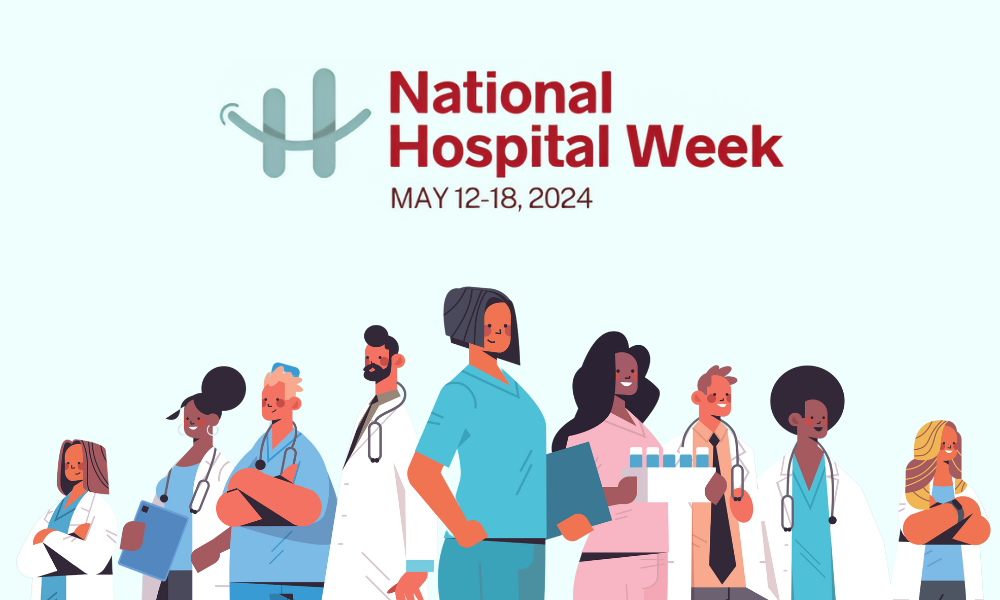In This Issue:
- 5 Ways Medicare’s Proposed Cuts Will Affect Physicians in 2023
- 3 Reasons Why Locum Tenens Is an Excellent Option
- Don’t Give Up on Private Practice Just Yet!
- Only 68% of Young Physicians Would Choose Medicine Again
- Employed Physician Salary: Some Stats
- More Physicians Go ‘Corporate’; Staff Shortages Growing: 4 Trends to Follow
- Breaking Down the No Surprises Act
- Planning for Your 2022 Taxes
- PA vs. RN vs. NP Pay for All 50 States
5 Ways Medicare’s Proposed Cuts Will Affect Physicians in 2023
(Lightly edited from Becker’s ASC Review article by Alan Condon, 9/22/2022)
Physicians are bracing for an 8.42% drop in CMS payment rates in 2023 and many medical groups are considering limiting the number of new Medicare patients or reducing charity care as a result, according to the Medical Group Management Association (MGMA).
The proposed cuts are projected to significantly disrupt access to care, practice operations, and investment throughout the healthcare industry. If implemented, here are the top five practice trends that will occur, that MGMA predicts:
- Reducing or eliminating the number of Medicare beneficiaries served.
- Delays in scheduling care, resulting in up to six months’ wait for visits.
- Decreased ability to recruit staff at all levels, including physicians, clinical support staff, and administrative staff, especially in rural areas.
- Reduced participation in value-based contracts as limited resources and revenue eliminate non-essential practice activities.
- Closing satellite offices or selling practices due to insufficient revenue streams.
The projected Medicare cuts will also affect Medicaid and private payer rates, which are often contracted as a percent of Medicare rates, according to the MGMA. As Medicare reimbursement declines, practices will likely see a decrease in operating revenue, which will further reduce their ability to provide timely, high-quality care to patients.
All News Is Locums
3 Reasons Why Locum Tenens Is an Excellent Option
(Edited from BayCitizen.org article by Elle Gellrich, 9/19/2022)
Locum tenens, in simple terms, is substituting or taking someone’s place. In the healthcare industry, locum tenens refers to working as a substitute for a medical practitioner who may be unable to work temporarily in a specific facility for some reason.
If you consider locum tenens as your career, you open yourself up to countless opportunities to further your healthcare career. Many medical and healthcare facilities are short-staffed and need medical personnel to fill vacated positions, so ‘side-gig’ options are plentiful.
Because these are temporary positions, you can generally expect a higher pay rate than regular staff earn. You are considered an independent contractor and, generally, you’re paid hourly for blocks of time in the facility. The job can last for a couple of days weeks or months and may even extend for years. It all depends on the position you are filling and your arrangement with the facility.
Agencies Offer Options
If you find locum tenens interesting and are open to expanding your horizons, locum tenens agencies can assist you. Currently, there are more than a hundred locum tenens firms–most of them members of the National Association of Locum Tenens Organizations® (NALTO®)–that can present you with suitable positions in various practice settings and locations.
Whether you’ve had years of experience in the field or you just completed your residency, excellent benefits await you with locum tenens, including:
- Learning opportunities
- More flexible scheduling
- Higher earnings
Learning Opportunities
Locum tenens offers opportunities to learn more about your specific field. Since your work takes you to different medical facilities, you might get to explore new techniques, equipment, and practices. You also have the chance to work alongside other medical professionals who offer different experiences and fresh ideas that may prove valuable down the road.
The clinical experience you gain as a locum tenens physician or advanced practitioner can broaden your skills and build your “CV”–in either your chosen specialty or another related field (like emergency or internal medicine).
More Flexible Scheduling
For healthcare professionals who have chosen locum tenens work, the flexible schedule is one of the most attractive benefits. You can control your schedule and choose shifts and days that best suit you.
More importantly, you can work your locum schedule around your personal life, rather than the other way around. Especially for clinicians with children at home–or those with hobbies for which they are passionate–locum tenens practice can provide the ideal lifestyle.
In areas where there are several ‘fill-in’ opportunities, you can often alternate days, weeks, or months among two or three positions, reducing the monotony and stress that accompany some clinical situations. Or add a locum tenens assignment or two per month beyond your full-time practice schedule to vary the routine and earn extra income.
Higher Earnings
Locum tenens work generally allows you to earn more than you would as a full-time physician or advanced practitioner for a specific facility. Higher demand to fill certain positions often means higher pay than would accompany those jobs on a ‘permanent’ basis.
Also, pay rates often differ from one facility or geographic location to another. When you accept a locum tenens assignment, you generally contract for a certain time duration at a specific rate. Naturally, the harder-to-fill positions tend to pay the most.
Locum tenens work is fulfilling because you can focus more on your patients and provide them with the care they need without the administrative hassles that usually come with private practice. You can choose when, where and for how long you work and use the additional income to cover healthcare, vacation, retirement, and other “perks” for yourself that would generally come with a full-time position for a specific employer.
In today’s “gig economy,” locum tenens is the physician’s answer to independent practice without the overhead and stresses that solo practitioners take on.
Don’t Give Up on Private Practice Just Yet!
(Lightly edited from KevinMD article by Helen Rhodes, MD, 9/15/2022)
The medical landscape for practicing physicians is changing. Seemingly the option of “hanging one’s shingle,” being your own boss, setting your schedule, and providing personalized care in a warm and cozy environment, “Marcus Welby style,” isn’t a viable option anymore.
Rather, graduating physicians are choosing among the options of becoming a hospital-employed physician, hospitalist, employed physician in a large multispecialty group, joining the faculty at an academic institution, or, sadly, electing not to practice clinical medicine at all
[Editor’s Note: We would add the option of practicing on a locum tenens basis, which generally allows a physician or advanced practitioner to work fewer weeks throughout the year while making comparable pay.]
I’ve experienced all of these practice scenarios and feel that no one option fits all and no one option fits each phase of a physician’s professional and personal life.
Private Practice IS an Option
Given the high rates of physician burnout and the known relationship between loss of physician autonomy and subsequent burnout, I feel the option of private practice should be promoted and maintained as a viable career opportunity for physicians.
Maintaining this practice option can help remedy physician burnout by allowing doctors to run their practices in the manner they feel is best for their patients and their lifestyle, thus enabling the proper work-life balance to be achieved.
My career in medicine has encompassed work experiences in academic medicine, large multi-specialty group practice, hospitalist work, locum tenens work, part-time, full-time, self-imposed sabbaticals to care for children, non-clinical jobs, and private practice.
Each of these experiences has allowed me to achieve career growth through professional successes and failures, as well as personal introspection.
For me, currently owning a solo gynecology private practice, coupled with earning income from several side-gigs, has propelled me past phases of physician burnout and allowed me to provide the best care possible to my patients and a pleasant work environment for my employees. I feel that by developing a career portfolio, I have been able to maintain optimal work-life balance, maintain my professional stamina, and continue to seek out and explore new opportunities.
I strongly encourage newly trained physicians and other physicians at various stages of their careers to explore private practice models of care. Medical schools and residencies should incorporate basic business skills education into their curricula along with private practice mentorship.
[Running a Practice] Isn’t ‘Rocket Science’
The reality is that if you can balance a checkbook, run a lemonade stand or organize a garage sale, you can build and run a private practice. It doesn’t take an MBA or online education to succeed. Private practice revenue may not meet your expected budget, but by leveraging side-gigs, you can continue to see patients at a pace that allows you to run on time, maximize billing and provide the best care for your patients.
Nurturing long-term relationships with people is what keeps those of us in private practice going. Hearing our patients’ stories, partnering with them to achieve optimal health, and getting to know them intimately is rewarding for everyone.
My hope is that those of us working in private practice settings will mentor and inspire others to do the same. Preserving physician autonomy is one step toward putting the practice of medicine back in physicians’ hands.
The Healthcare Staffing Story
Only 68% of Young Physicians Would Choose Medicine Again
(Edited from Becker’s Hospital Review article by Mackenzie Bean, 9/23/2022)
Sixty-eight percent of physicians under age 40 said they would choose a career in medicine again if they could redo their careers, down from 76% a year prior. Thirty-two percent said they would not choose medicine again. according to Medscape’s 2022 Young Physician Compensation Report.
The report is based on survey responses from 13,064 physicians in 29 specialties polled between Oct. 5, 2021, and Jan. 19, 2022.
More Findings:
- Only 54% of young physicians said they felt fairly compensated. Average annual pay for physicians ages 28 to 34 was $260,000. For physicians ages 35 to 39, the average jumped to $311,000.
- When asked to identify the most challenging part of their jobs, young physicians cited dealing with difficult patients (22%), long work hours (19%), and having so many rules and regulations (18%) as their top three challenges.
- Gratitude from patients and patient relationships were the most rewarding part of the job for 27% of respondents.
View the full report here.
Employed Physician Salary: Some Stats
(Lightly edited from Becker’s ASC Review, article by Patsy Newett 9/16//2022)
Medscape’s 2022 “Employed Physicians Report” surveyed more than 1,350 physicians employed by healthcare organizations, hospitals, large group practices, clinics, or other medical groups about their jobs.
Here are a few stats about employed physician salaries:
- How employed physician compensation is structured:
- Salary only: 32%
- Salary, productivity targets, and other metrics: 32%
- Salary and other incentives: 26%
- Productivity targets only: 5%
- Other: 4%
- How employed physicians feel about productivity targets and performance metrics:
- Unfair: 23%
- Neutral: 40%
- Fair: 37%
- Percentage of employed physicians happy with their income:
- Very satisfied: 11 percent
- Satisfied: 45 percent
- Neutral: 22 percent
- Unsatisfied: 18 percent
- Very unsatisfied: 4 percent
More Physicians ‘Go Corporate’; Staff Shortages Growing: 4 Trends to Follow
(Lightly edited from Becker’s ASC Review story by Alan Condon, 7/11/2022)
Almost three out of four physicians are employed by hospitals, health systems, or other corporate entities (such as insurers and private equity firms), while staff shortages that have recently plagued the healthcare system are expected to worsen in the coming years.
Four Trends to Consider
- Over the three-year study period ending in 2021, more than 108,700 physicians left independent practice, with 58,200 physicians joining hospitals and 50,500 moving to other corporate entities, according to an April 2022 report from business consulting firm Avalere. Three-quarters of the 108,700 physicians became employees since the COVID-19 pandemic began.
- As of January 2022, hospitals and corporate entities (including private equity firms and insurers) owned 53.6% of physician practices. Hospitals own 26.4% and other corporate entities own 27.2%, according to Avalere.
- By 2030, the overall physician shortage in the US is projected to reach 121,300, according to a January report from financial planning company Physicians Thrive. Cardiology, ophthalmology and orthopedic surgery are expected to see the most significant physician deficits.
- By 2025, consulting firm McKinsey & Co. anticipates a gap of between 200,000 to 450,000 nurses available for direct patient care. To meet this demand, analysts said the US would need to more than double the number of new graduates entering and staying in the nursing workforce every year for the next three years
Tools to Try/News to Use
On January 1, 2022, the “No Surprises Act” went into effect. This new legislation addresses medical billing issues at the federal level and establishes transparency and patient protections against surprise medical bills.
View this free webinar to learn everything you need to know about this new law, including:
- Understanding what it entails and why
- Advice on compliance*
- Easy-to-use solutions
*Not legally binding
Sponsored by:
Planning for Your 2022 Taxes
(Edited from Psychiatric Times article by David Auer, CPA, MS, PFS, CGMA , 9/15/2022)
Taxes are inevitable, but proper planning can protect against an outsized portion of your income going to taxes. Recent changes to the tax code have outdated some strategies and introduced others. With inflation at the highest it has been in four decades, the need for physicians to utilize these strategies has gained outsized importance.
Determine Your Bracket
The first part of developing an effective tax strategy is determining which tax bracket you fall into and how much more you can earn before you move up to the next bracket. Based on experience, most doctors will find themselves paying around 35% and possibly up to 37%.
If you have a C-corporation, the tax is a flat 21%, whereas self-employed physicians and employed physicians have Social Security tax rates of 12.4% and 6.2%, respectively. Physicians should also factor in their capital gains taxes, as well as state income and corporate tax liability.
President Joe Biden has proposed increasing taxes, but legislators are running out of time to make the changes into law before the end of this year. I [Auer] do not believe taxes on the highest earners will rise to the historical high of 94%.
Depending on what state you live in and what other taxes you might be subject to, [your effective tax rate] could very well be into the 60% to 70% range, and that becomes very important when it comes to tax planning.
Maximize Retirement Plan Contributions
To lower your taxable income and move yourself into a lower tax bracket, you need to maximize the retirement plan contributions you’re allowed to take. Also consider a Roth conversion, which involves rolling over funds from a traditional IRA or retirement plan to a Roth IRA.
Individuals who own a traditional IRA or-, a SEP IRA–or those who have had a SIMPLE IRA for at least 2 years—are eligible for this maneuver. It is also available to those with a 401(k), a 403(b), or a government 457(b) plan eligible for distribution.
Roth IRA funds can be withdrawn tax-free so long as the funds have been held for at least 5 years and the holder is at least 59.5 years old. There is also no lifetime required minimum distribution for Roth IRA owners.
Consider funding a ‘back-door’ Roth IRA and a Mega Roth 401(k) to further lower taxable income. If properly utilized, these can enable you to put away an additional $66,000 and lower your taxable income.
When it comes to investments, harvesting capital losses is a good plan, as it can offset current and future capital gains, plus save you an additional $3,000 a year. However, beware of the capital wash rule that prohibits selling an investment for a loss and replacing it with the same or a “substantially identical” investment 30 days before or after the sale.
Reclassify Income
Physicians should also consider converting W-2 income to 1099 income either in part or in entirety. This is helpful, especially if the physician has locum tenens income in addition to their regular job. This also adds the ability to claim business expenses as deductibles.
For those physicians who already have Schedule C/1099 income, consider converting that income to an S-Corporation LLC. This will lower self-employment taxes and reduce the risk of an audit.
Based on the most recent published statistics the IRS has provided, generally speaking, if you have a Schedule C income of over $250,000, you currently have about a 2.5% chance of an IRS audit. If you have that same income going through an S-Corporation, statistically, that drops your audit risk down to 0.7%—a fairly significant drop in the risk of an audit, everything else being the same.
With an S-Corporation in place, consider employing family members by putting them on the payroll and assigning responsibilities. This shifts income from being subject to your tax bracket to being subject to their tax bracket.
Maximize Deductions
A physician (or advanced practitioner) can also maximize their home office and automobile deductions. There are acceptable ways to do this. Physicians should work with a tax planner to ensure they are getting the most out of the vehicle and workspace. Physicians should also consider the per diem allowances for lodging and meals as opposed to the actual expenses.
Finally, physicians should consider making a pass-through entity (PTE), such as an S-Corporation or partnership, to pay individual state income taxes at the PTE level, which enables the clinician to deduct the cost of that tax dollar-for-dollar. This is available in 40 states.
David Auer is the president and founder of Physician Tax Solutions.
How ‘Bout This?
PA vs. RN vs. NP Pay for All 50 States
(From Becker’s ASC Review article by Marcus Robertson, 9/23/2022)
The average hourly pay for nurses in the US is $39.78 for registered nurses and $56.75 for nurse practitioners, and the national average pay for physician assistants is $55.81 per hour, according to the most recent US Bureau of Labor Statistics occupational employment statistics survey.
The highest average hourly wage for both registered nurses and nurse practitioners is in California, while the highest for PAs is in Alaska. RNs and NPs in South Dakota and Tennessee made the lowest hourly rates, respectively, and Kentucky holds the lowest average pay for PAs.
Here is the average hourly wage for PAs, RNs, and NPs by state, in descending order of their grouped average:
To view the rest of the states’ averages, click here.











